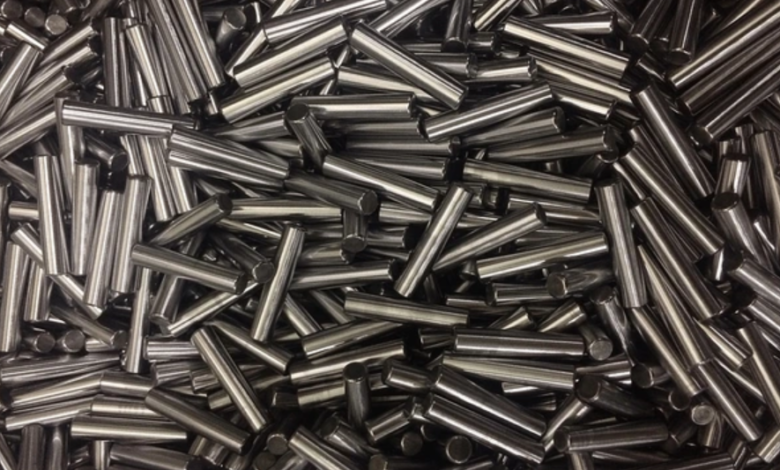Dowel Pins Explained: Why Precision Matters in Mechanical Assemblies

Alignment of parts in any mechanical instrument doesn’t get the credit it deserves. Most people focus on the obvious stuff—bolts, bearings, torque settings. But if something isn’t lined up right from the start, none of that holds together for long. Things loosen, vibrate, and then wear out.
That’s where dowel pins quietly come in.
They’re not flashy. They don’t rotate, slide, or lock into place with a click. Still, they’re responsible for keeping some of the most essential mechanical connections stable. And yet, they’re often the last thing people think about… until something fails.
Dowel Pins Do More Than People Think
It’s easy to overlook dowel pins. After all, they’re just smooth cylinders—nothing complex at first glance. But their entire purpose is to make sure parts align exactly the same way as needed every single time. Think machine plates, housings, precision tools—any place where the slightest shift can cause a chain reaction.
What’s interesting is that you often don’t realise how critical they are until you try assembling without them. Parts shift just enough to cause headaches. Then, tolerances start stacking up, gaps appear, and bolts bend slightly to compensate. Over time, it adds up.
And once damage starts from poor alignment, there’s no easy fix. The surface wear, the off-centre loads—it can creep in without warning.
Where They Show Up (and Why They Stay Quiet)
Dowel pins work best in places where movement is the enemy. Anywhere repeatable accuracy is necessary, they show up:
- Inside transmission housings
- Around bearing supports
- Between motor mounts
- In industrial jigs or dies
- Even in robotics or aerospace fittings
Not because they’re strong (they aren’t designed for load-bearing) but because they’re consistent. And sometimes, consistency is what saves you from chasing down a vague rattle or vibration six months later.
There’s also the maintenance side. If you need to disassemble and reassemble a system, dowel pins ensure everything returns exactly where it should. No guessing, no extra measuring. Just click back into place—well, not literally, but close enough.
Choosing the Right Pin Isn’t Just Spec Work
At some point, most people ask: can’t I use a bolt? The short answer? Not really. Bolts stretch. Threads wear. They’re great for holding things together under force, but not for alignment. That’s where the pin comes in.
There’s more to consider than just size. You’ve got to think about:
- Fit (press vs slip)
- Material (stainless, hardened steel, etc.)
- Surface treatment (especially if there’s a risk of corrosion)
- Heat expansion, if temperatures fluctuate
This is where surface finish becomes essential. Too smooth, and you might get micro-slippage. Too rough, and the pin scrapes its way in, damaging the bore. It sounds overly specific, but in tight-tolerance assemblies, that small detail can make a difference.
See also: How Small Businesses Can Streamline Payroll and HR Processes
Press Fit or Slip Fit? Depends on the Job
Most applications fall into two camps: either you want the pin to stay put for good (press fit) or be removable when needed (slip fit). Neither is better. They serve different purposes.
Press fits are great when parts don’t need to move—ever. Slip fits work when disassembly is part of the game plan.
One detail that sometimes gets missed is the hole. If the hole isn’t reamed properly, even the best dowel pin won’t seat right. Then alignment is off by a hair. That might not matter at first. But vibration loves even the smallest gaps.
Common Mistakes That Cost Time (and Repair Bills)
Let’s be honest—dowel pins are easy to get wrong. They seem so straightforward that people don’t always give them a second thought. That’s usually where problems start.
Some examples:
- Forcing a pin into a soft material like aluminium without support? You’ll warp the hole.
- Reusing a deformed pin? It won’t seat properly and may gouge the housing.
- Relying on the pin to take the load? That’s not its job. That’s for bolts.
And sometimes the issue isn’t the pin at all. It’s the way it was installed. Hammering it unevenly, or worse, without checking bore alignment first—it’s asking for trouble.
A Story That’s Probably Too Familiar
A maintenance team kept replacing a misaligned shaft on a packaging machine. It ran fine for a few days, then the issue would return. After multiple bearing swaps and shaft replacements, someone finally realised the gear housing didn’t have dowel pins installed. Once the pins were added, the alignment stayed true—no more mystery failures.
It wasn’t an exciting fix. No fancy tech. Just adding two small steel pins. But it saved them months of headaches.
Predictability Over Perfection
Dowel pins don’t promise perfection. Materials still flex. Parts still wear. But they bring a kind of predictability. You know the components will line up the same way every time. That predictability removes one more unknown from the equation—and that’s often all you need.
There’s a temptation to overlook components like this. They don’t come up in design meetings much. They’re not sexy or mechanical marvels. But once you’ve had an assembly go wrong because of poor alignment, you see them in a different light.
They’re the control variable in a chaotic system—one less thing to go wrong.
Final Words
Sometimes, engineering is about the stuff you don’t notice. Dowel pins fall squarely into that category. They don’t make noise. They don’t break easily. They don’t demand attention. But they keep things honest. They keep your parts where they’re meant to be.
And once you’ve seen what happens when they’re missing, you start adding them by default. Not because you have to. But because you’d rather not risk finding out what happens without them.
